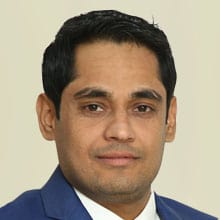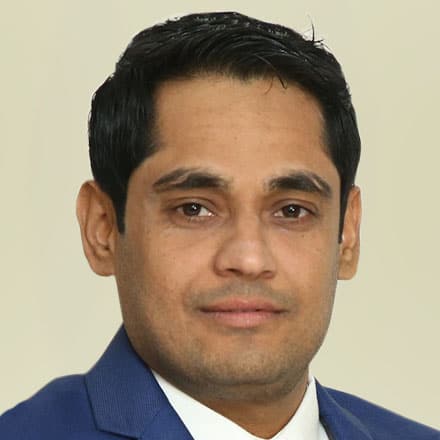Inside Angle
From 3M Health Information Systems
The Indian health system’s innovative way of managing human resource shortages during the COVID-19 pandemic
COVID-19 and its multiple waves has led to many hospitalizations in India. India reported the peak of 414,000 cases in a single day on May 6, 20211. The burden brought by the COVID-19 second wave and expected third wave means 200,000 nurses and 150,000 doctors must be dedicated to COVID-19 management for the next year2. The Indian government has adopted an innovative and efficient approach to tackle the shortage of human resources in the health system and address the huge hospitalization burden. This blog outlines the major steps taken by the central and state governments in India.
Innovative student approach
A young doctor sitting in a library preparing for the National Eligibility and Entrance Test (NEET) to get an elusive post-graduate (PG) seat, receives a notification that if he completes 100 days of COVID-19 ICU duties, he will be given the Prime Minister’s Distinguished COVID-19 National Service Samman (respect) from the government of India and will also be given priority in forthcoming regular government recruitments. This is one of many new policy decisions from the Indian government.
These new policies are designed to entice medical interns, 220,000 final year nursing students, 130,000 final year Bachelor of Medicine, Bachelor of Surgery (MBBS) students and MBBS doctors, 50,000 PG doctors (who finished their post-graduate specialist training but have not yet taken their exams) to provide services like tele-consultation and monitoring of mild COVID-19 cases under the supervision of their faculty members and senior doctors1,2,3.
India had already recruited 541 medical colleges and 36,000 post-graduate medical students to combat the crisis of human resources during the first wave of the COVID-19 pandemic1,2,3. The government also decided to postpone NEET-PG to free up many qualified doctors for COVID-19 duties3.
States pioneer new policies
One state named Karnataka announced after consultations with hospitals that students in the final year of nursing, pharmacy, physiotherapy, dental and hospital management degrees would be posted for management of COVID-19.
Conversion of hotels into hospitals
Basavaraj Bommai, the Karnataka state chief minister, also announced that hotels would be converted into step down hospitals with oxygenated beds, while existing oxygenated beds would be converted into ICU beds in order to expand facilities. Similar initiatives were announced in many states and hotel staff are even being utilized for non-medical services of COVID-19 cases. One chain of hotels named Indian Hotels Company Limited (IHCL) provided 1,400 hotel rooms for conversion into hospital beds. Many hospital chains also participated in the process to provide thousands of beds for COVID-19 patients4.
Benefits to health professionals
All health professionals engaged in COVID-related duties are covered under the Insurance Scheme of Government for health workers. Those completing 100 days of COVID-19 duties will be given the Prime Minister’s Distinguished COVID-19 National Service Samman and priority in forthcoming regular government recruitments. They will also be provided with grace marks along with final year completion certificates and incentives for COVID-19 duties.
Industry’s voice
Dr. Devi Shetty a renowned cardiac surgeon and industry expert4 has exhorted the government to enlist doctors with a PG in medicine and surgical specialties, nursing students with GNM or BSc training, young doctors preparing for specialization examinations and doctors who have graduated from overseas universities4. Suggestions such as these from around the health industry were not only welcomed but implemented by federal as well as state governments.
In my opinion, the above mentioned steps taken by the Indian government are excellent and necessary in this hour of need. The Indian health system has also responded brilliantly by adopting the government’s steps and young health professionals have contributed a lot despite the long hours and challenging conditions of patient burden and maintaining their own health. The COVID-19 cases per day have dwindled down to 42,346 as of September 3, 2021. This plunge cannot solely be attributed to these new polices, but they have created a definitive positive impact in reducing the COVID-19 pandemic in India5.
*Disclaimer: The number of professions mentioned in the article are approximate numbers collected from various news articles and grey literature, it may vary from the actual numbers
Dr. Naveen Sharma is the clinical consultant for international markets at 3M Health Information Systems.
References:
- https://indianexpress.com/article/india/two-months-after-explosive-surge-2nd-corona-wave-still-visible-but-its-worst-over-7343239/
- https://indianexpress.com/article/india/lack-of-doctors-and-nurses-to-treat-covid-patients-will-be-the-next-big-crisis-dr-devi-shetty-7298066/
- https://www.hindustantimes.com/india-news/govt-to-rope-in-medical-interns-final-yr-mbbs-students-on-covid-duty-101620039305815.html
- https://hospitality.economictimes.indiatimes.com/news/hotels/hotels-turn-into-hospitals-and-extend-care-for-patients/82311302
- https://www.worldometers.info/coronavirus/country/india/


